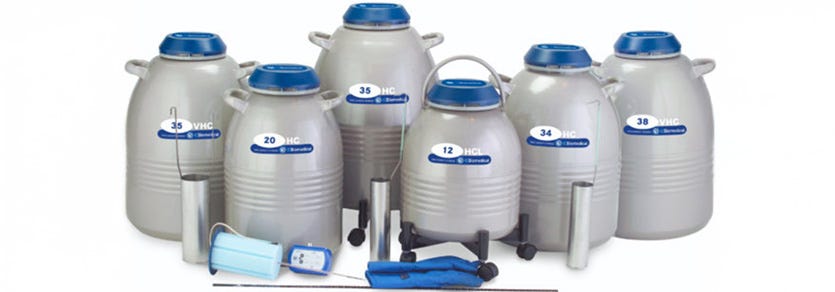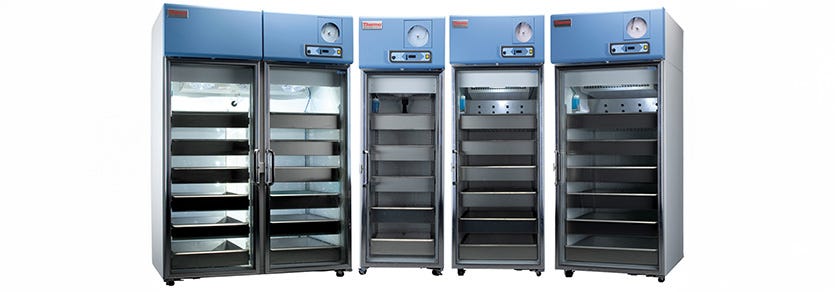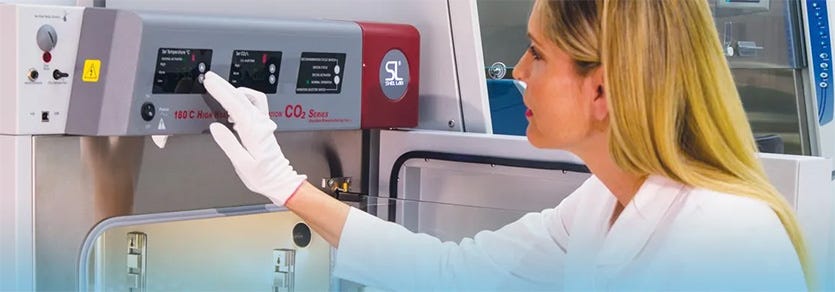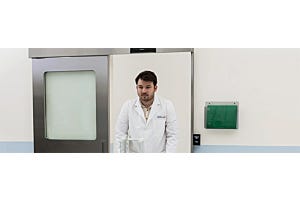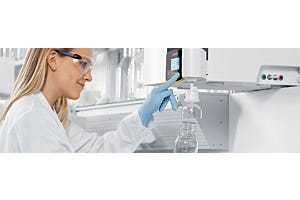Laboratory and medical-grade refrigerators are manufactured in a broad range of sizes, from benchtop models smaller than 6 cubic feet to upright, double-door models larger than 40 cubic feet. Refrigerators smaller than 6 cubic feet are designed to fit on crowded work surfaces or under pharmacy counters to provide point-of-use cold storage for media, reagents, or vaccines.
High-capacity, upright refrigerators include microprocessor controls to maintain precise, uniform conditions throughout the storage area to prevent sample spoilage due to temperature fluctuations. Double-door and triple-door refrigerators isolate samples from different production batches to prevent cross-contamination and exposure during refrigerator access.








